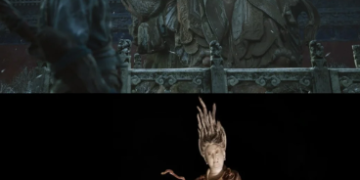A New Era: Virtual Idols Transforming the Music Scene
Think back half a decade—could you have imagined cheering for an idol who only exists in pixels? Today, virtual idols are front and center, captivating audiences as animated personalities that rival their human counterparts. Groups like PLAVE, a trailblazing virtual K-pop act, have emerged at the heart of this movement. Not only do they release full albums with energetic tracks like \”BBUU,\” \”Hide and Seek,\” and \”BongSoongAh (Balsam Flower),\” but their performances feel strikingly lifelike despite being entirely digital. What sets these virtual stars apart isn’t just technological wizardry—it’s the way fans rally around them, forming vibrant communities across borders and languages.
Gone are the days when fan clubs were limited by geography. With virtual idols, admirers unite on global platforms, interact in live chats, and get firsthand updates, all in real-time. It’s become common to see people from Tokyo, Seoul, and beyond bonding over virtual concerts streamed into their living rooms. These idols may never set foot on a physical stage, but their reach and charisma foster genuine loyalty that transcends screen and time zone.
Beyond Entertainment: Immersive Tech Revamping Cultural Heritage
Virtual influence isn’t confined to the pop music sphere. Innovations in immersive technology, especially virtual reality, are now reshaping how people experience historical and cultural stories. At the Sharjah International Book Fair, for instance, a VR journey allowed attendees to step into ancient Makkah and Madinah. Developed by Ana Al Madina, this project transported users back 1,400 years, offering sights and sounds of pivotal moments in early Islamic history. Instead of reading about history, participants walked through bustling markets and narrow alleys, feeling firsthand the environments where spiritual and societal transformation unfolded.
Leaders like Dr. Adil Abdul Qadir see these advancements as more than educational novelties—they’re tools for empathy and connection. Such experiences do more than inform; they move and engage, helping people appreciate heritage and faith in ways never before possible. These digital journeys remove boundaries, making the nuances of culture and history accessible to virtually anyone, anywhere.
The Global Ripple Effects: Community, Technology, and Cultural Change
As virtual idols and immersive experiences continue gaining traction, their influence extends far beyond entertainment and education. They’re part of a broader digital shift changing how communities interact, how culture spreads, and how individuals relate to both art and one another. For the music industry, digital idols solve problems that have plagued live events for years: no more venue limitations, no international travel headaches, and a new level of privacy for performers. For fans, the chance to attend a concert or join a fan club is no longer bound by where they live.
In the world of virtual reality, cultural and historical learning becomes a personal venture. Instead of passive observation, participants are active explorers—immersing themselves in ancient worlds, forging paths through pivotal moments, and sharing insights with others in global virtual communities. These experiences foster understanding and build bridges across backgrounds, offering revelations about shared humanity.
Expanding Horizons: Technology Meets Passion
What’s especially remarkable is the enthusiasm fueling these innovations. Fans invest time and creativity into supporting virtual idols; they create art, develop games, and even launch entire online platforms dedicated to their favorite pixelated celebrities. These fan-driven initiatives often serve as miniature digital societies—spaces rich with conversation, humor, and a shared sense of belonging. The boundary between artist and audience blurs as both collaborate, invent, and inspire each other.
Meanwhile, the technology behind these phenomena continues to evolve. Advances in motion capture, AI-driven animation, and high-speed networking make it possible for virtual idols to deliver performances that rival—and sometimes surpass—live acts. These breakthroughs not only improve entertainment, but also boost educational efforts like immersive VR history projects. Deeper immersion, greater interactivity, and broader access all point to a future where art and learning are less about consumption and more about participation.
Forging New Connections: The Human Touch in Digital Worlds
Perhaps the most profound change isn’t technological, but cultural. Fans of virtual idols and participants in VR heritage projects often speak of a renewed sense of connection—not only to their favorite stars or ancient traditions, but to one another. This sense of belonging shapes identities, rebuilds communities, and introduces fresh perspectives on what it means to be part of a cultural moment.
In the end, the digital revolution triggered by virtual idols and immersive technologies stands to redefine interaction at every level. Whether you’re swept up in a virtual concert or exploring the winding streets of ancient cities through a headset, the journey is reshaping how people gather, learn, and celebrate. And as these innovations continue to grow, they promise a dazzling future where borders dissolve and connection becomes limitless. “summary”: “Virtual idols like the K-pop group PLAVE and immersive VR experiences are changing how people connect with art, music, and history. By blending entertainment with education, these digital innovations create new spaces for global fan engagement and interactive learning. As technology advances, virtual idols and experiences are shaping a borderless community, redefining cultural participation, and paving the way for deeper, more personal interactions across the globe.




























